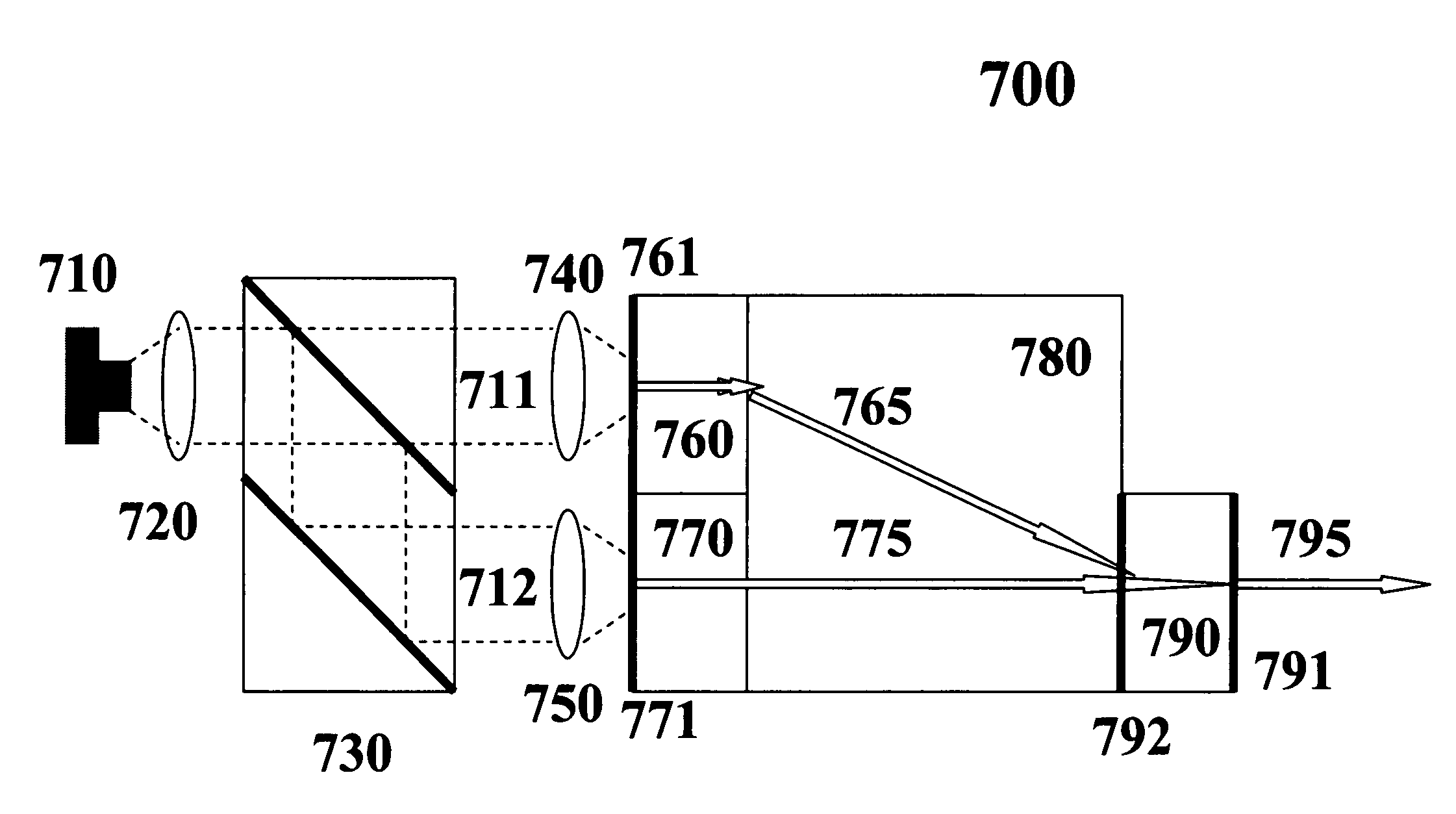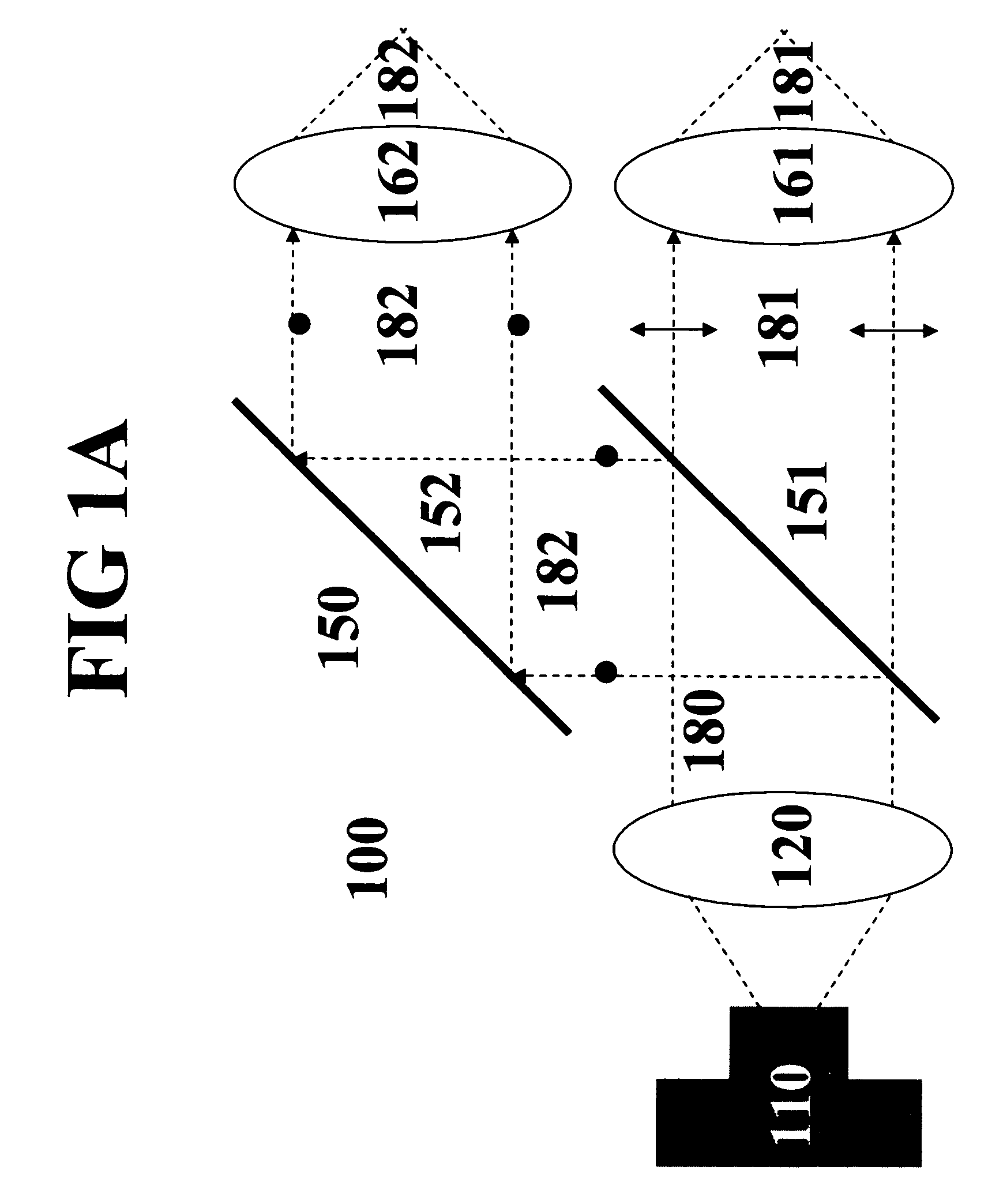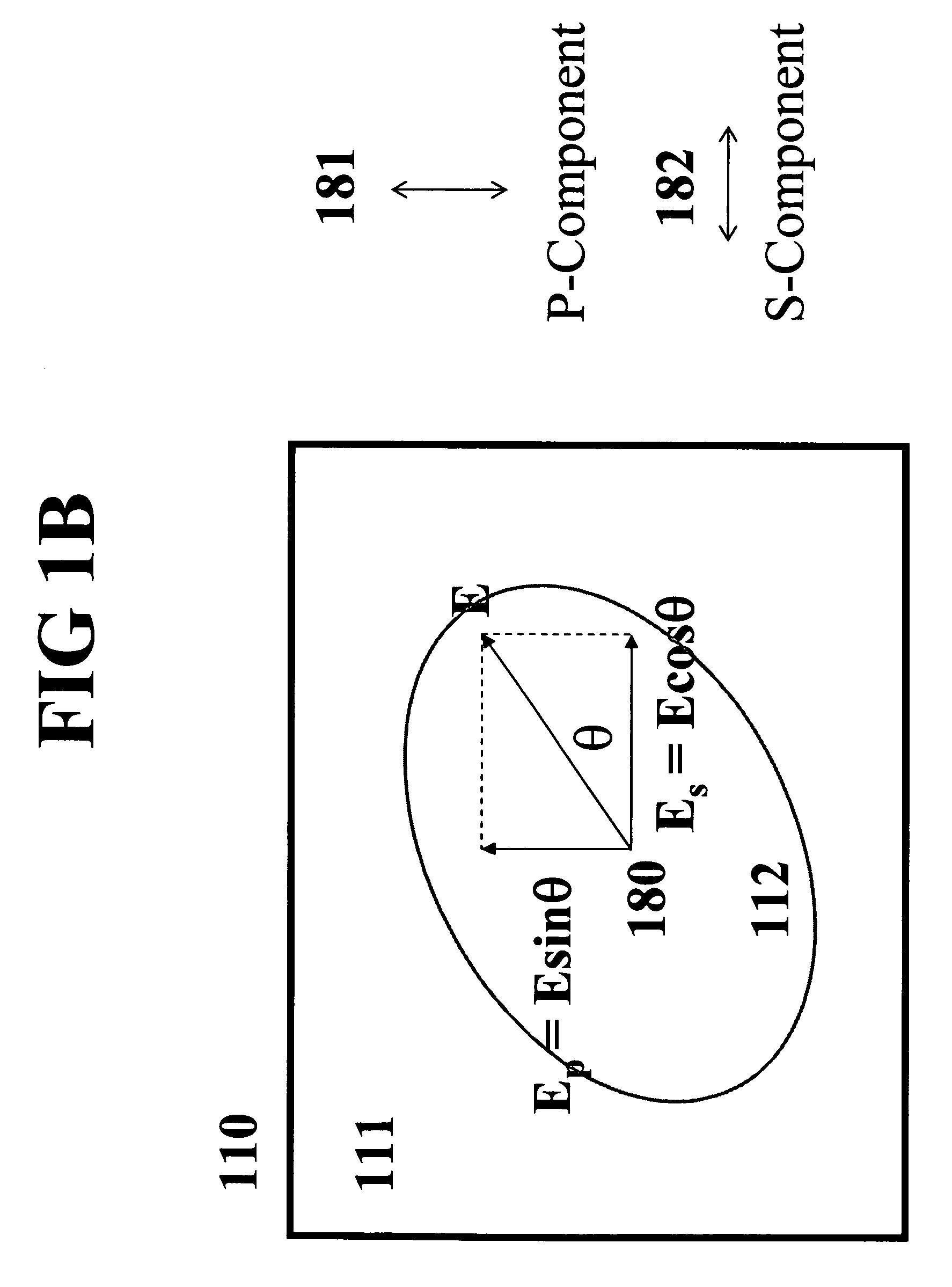Method, apparatus and module using single laser diode for simultaneous pump of two gain media characteristic of polarization dependent absorption
a laser diode and gain media technology, applied in laser optical devices, laser details, active medium shape and construction, etc., can solve the problems of limited application in the prior art and not applicable to monolithic systems, and achieve the effect of optimizing laser performan
- Summary
- Abstract
- Description
- Claims
- Application Information
AI Technical Summary
Benefits of technology
Problems solved by technology
Method used
Image
Examples
first embodiment
[0026]Referring now to the drawings and in particular to FIG. 1A, wherein dual beam pump from a single laser diode constructed according to the present invention is shown in a schematic form. The inventive dual beam pump source 100 includes a laser diode 110, in particular, a free-space emitter for emitting light, a beam shaping element 120 for collimating the diode emission, two coated mirrors 151 and 152 for light separation, and two additional beam shaping elements 161 and 162 for focusing the output beams. The beam shaping elements 120, 161 and 162 may be separated lenses or integrated micro lenses or lens arrays.
[0027]Preferably, the mirror 151 is coated with polarized light separating film on at least one optical surface. In accordance with our inventive teachings, the film transmits light polarized in the preferred direction, e.g., p-component, and reflects light polarized in the other direction, e.g., s-component. The mirror 152 is highly reflective to the s-component of the...
fourth embodiment
[0034]FIG. 4 shows the present invention, in which a fiber-coupled emitter 410 is employed as the light source, together with integrated polarization control. Fiber-coupled pump laser diodes is used as one of the most popular formats for laser diodes. Typically, the fiber core diameter is in the order of 100 μm for a single emitter laser diode and the fiber length may vary. As is well known, the light polarization tends to be randomized due to propagation through a non-polarized fiber, or fiber optic devices for de-polarization purpose. For fiber length around 1 m, the randomization becomes complete and the emissive beam 180 is randomly polarized with uniform distribution along any direction. Upon interaction with the beam split element 151, the emissive beam is split into p-component 181 and s-component 182 with identical intensities.
fifth embodiment
[0035]the present invention is shown in FIG. 5, in which the polarization control element is a half wave plate 530. Inserted in the optical path, the half wave plate 530 rotates the diode emission polarization to a desired orientation. The beam split element 150, which, in this FIG. 5, is a pair of parallel mirrors 151 and 152 but can also be composed of other polarization sensitive components or their combinations as described in the forgoing text, splits the emission beam 180 into two components 181 and 182. Advantageously, the intensity ratio of the beams 181 and 182 is adjustable according to the polarization of beam 180.
[0036]With reference now to FIG. 6, where is shown a flowchart of a pump beam split scheme according to the present invention. In accordance with our inventive teachings, the polarization control, which can be physical orientation of a free-space emitter or optical rotation through a half wave plate or other polarization rotator, rotates the polarization directi...
PUM
 Login to View More
Login to View More Abstract
Description
Claims
Application Information
 Login to View More
Login to View More - R&D
- Intellectual Property
- Life Sciences
- Materials
- Tech Scout
- Unparalleled Data Quality
- Higher Quality Content
- 60% Fewer Hallucinations
Browse by: Latest US Patents, China's latest patents, Technical Efficacy Thesaurus, Application Domain, Technology Topic, Popular Technical Reports.
© 2025 PatSnap. All rights reserved.Legal|Privacy policy|Modern Slavery Act Transparency Statement|Sitemap|About US| Contact US: help@patsnap.com



